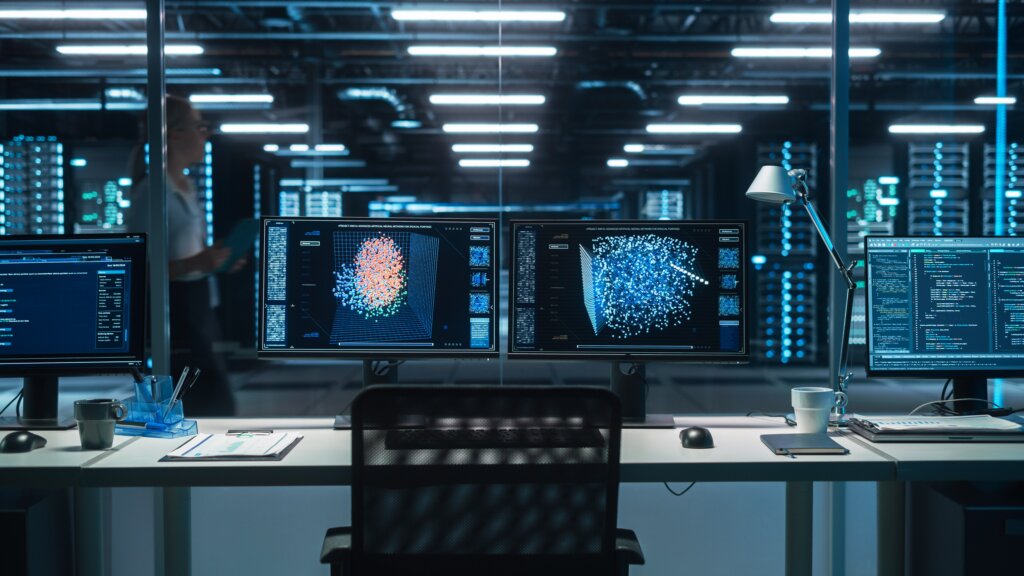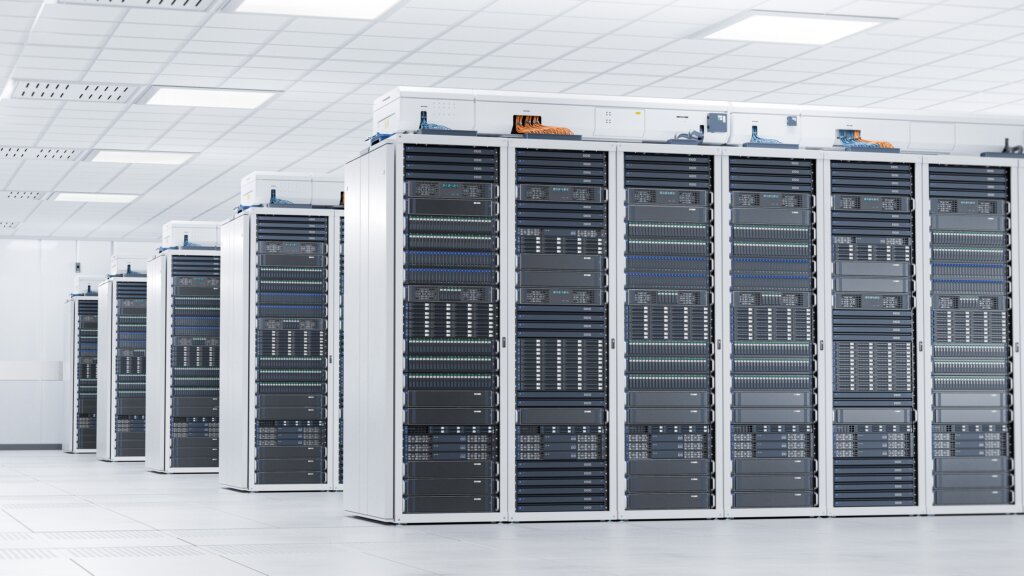Data centers are at the core of the hyper-connected world we live in today. From financial transactions to cloud storage and global communications, modern life hinges on data centers operating without interruption — no matter what happens to the power grid. Yet, power disruptions are inevitable, and only those with robust, tested emergency power strategies will be able to protect critical business operations for their clients.
But what do emergency power strategies really look like? How do leading data centers prepare for the worst — and succeed in a time of crisis?
In this article, we dive into 3 hypothetical (but realistic) scenarios that highlight how data centers might leverage technologies such as automatic transfer switches, generator docking stations, load banks, emergency lighting inverters, and sequence of event recorders, to ensure uninterrupted service and safety. These strategies not only protect critical operations, but also inspire confidence in the ability to meet the growing demands of a digitally connected world. As data centers continue to expand and evolve, these emergency power strategies and solutions will remain at the forefront of uninterrupted service and operational excellence. Whether designing a new facility or upgrading an existing location, these examples provide critical insights into building a resilient, “future-proof” data center.
Disclaimer: While realistic examples, the following scenarios are fictitious. Company names, characters, places, and incidents are intended to highlight the significance of the emergency power strategies noted above. Any resemblance to actual companies or events is purely coincidental.
Scenario 1: HyperNexus Cloud Storage
HyperNexus Cloud Storage, a leading provider of cloud services, knew that downtime was not an option — even during severe weather. To enhance its data center resiliency, HyperNexus implemented a comprehensive emergency power strategy that included the installation of advanced automatic transfer switches (ATS) and generator docking stations.
When a Category 4 hurricane caused a widespread power outage, HyperNexus’ data center transitioned seamlessly to its in-house backup generators, thanks to the ATS. But when the outage extended beyond initial projections, the team quickly brought in additional portable generators, connecting them via the pre-installed docking stations — without taking the facility offline.
This proactive approach ensured that HyperNexus maintained continuous service to its customers throughout the multi-day outage … thus demonstrating the real value of pre-planned generator docking solutions with an integrated ATS as part of a comprehensive, multi-tiered emergency power strategy.

Scenario 2: OmniGrid Data Host
OmniGrid Data Host, a global leader in financial data services, understood the catastrophic impact of even a minute in lost service to their clients. To ensure backup systems would perform when needed, OmniGrid incorporated trailer-mounted load banks and server rack load banks for regular full-scale system testing. These load banks simulated real-life power demands, enabling OmniGrid to validate that their generators, UPS systems, and PDUs could manage full operational loads. The proactive testing also identified any potential weaknesses in the power infrastructure before an actual emergency might happen. When a regional blackout did occur, OmniGrid’s data center switched to generator power — running at full capacity and serving millions of real-time financial transactions. The confidence created by regular load bank testing paid off, preserving OmniGrid’s reputation as a trusted provider of financial data services.

Scenario 3: QuantumNode Global Hosting
QuantumNode Global Hosting, a leading provider of web hosting services, focused on both operational resilience and employee safety as part of their emergency power plan. Their infrastructure included UL 924 Listed emergency lighting inverters to provide the required 90 minutes of illumination to “always on” lighting fixtures, as well as sequence of event recorders (SERs) for advanced diagnostics and quick post-event analysis.
When an unexpected power failure occurred, QuantumNode’s emergency lighting inverters seamlessly provided the egress lighting for all essential pathways, server aisles, and exit routes … thus facilitating safe building navigation for data center personnel. Additionally, the SERs provided precise 1-millisecond time-stamped event data, allowing engineers to quickly pinpoint the source of the fault and verify proper functioning of automatic transfer switches and backup generators.
Thanks to this multi-faceted approach, QuantumNode restored power within minutes — and more importantly, ensured that personnel remained safe during the incident.
Conclusion
In an era where uptime is non-negotiable, the ability to maintain electrical power resiliency is a defining mark of a world-class data center. The three scenarios explored in this article illustrate that with the right technologies and planning, even the most daunting power disruptions can be met with confidence and control. Emergency power strategies aren’t just a technical necessity—they’re a competitive advantage!
Ready to strengthen your facility’s resilience? Start by assessing your emergency power systems and identifying where smart, scalable upgrades can make the biggest impact. Review our previous article about how to prepare for grid failures and outages that affect data centers.
Then connect with one of our industry and application experts to begin to execute your emergency power strategy.
Stay tuned! Watch for an upcoming blog article about the best practices for power reliability in data centers!